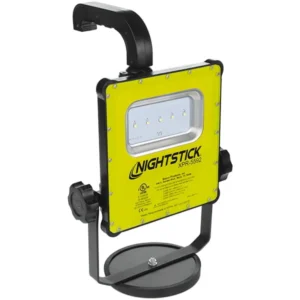In the realm of intrinsically safe lighting, regulatory compliance stands as a cornerstone ensuring safety and reliability in hazardous environments. Regulatory compliance delineates the parameters within which products must operate to mitigate risks to both personnel and property. We dedicate ourselves to provide you with the most reliable and up-to-date information on intrinsically safe lighting. Explore our website and discover our wide range of products.
Understanding Intrinsically Safe Lighting
In hazardous environments where flammable gases, dust, or vapors pose ignition risks, intrinsically safe lighting operates. These lights restrict electrical and thermal energy below levels capable of igniting hazardous atmospheric mixtures.
Emphasizing Regulatory Compliance
Regulatory compliance plays a crucial role in the field of intrinsically safe lighting. This is because it acts as a guardrail, ensuring that all products manufactured and sold adhere to the specific standards and regulations set by authoritative bodies. These standards aren’t arbitrary; they are designed to ensure the safety of the product for end-users and to guarantee the reliability of the product over its lifespan.
- Intrinsically safe lighting products are often used in hazardous environments where safety is paramount.
- Regulatory compliance becomes even more critical in this context to ensure that products are designed and manufactured to safely operate in these environments without posing risks to people or property.
- Non-compliance with these standards and regulations carries severe consequences:
- Legal penalties are only the tip of the iceberg.
- Companies found in non-compliance could face heavy fines.
- In some cases, they may even be banned from operating.
- Furthermore, they could also be required to recall all non-compliant products, which can be a costly and logistically challenging exercise.
Additionally, non-compliance can severely tarnish a company’s reputation. In today’s digital age, news of non-compliance can spread rapidly, leading to lost customer trust and potential damage to a company’s brand image. This can have long-term effects on a company’s profitability and growth. In some cases, it may even lead to the company going out of business.

Therefore, regulatory compliance is not something to be taken lightly in the world of intrinsically safe lighting. It is a crucial aspect that ensures the safety and reliability of products, protects companies from legal and financial repercussions, and helps maintain a company’s reputation in the market.
Global Standards Governing Intrinsically Safe Lighting
Several global standards dictate intrinsically safe lighting’s design and manufacture, such as:
- IECEx System: It certifies internationally recognized equipment meets safety standards.
- ATEX Directive: It governs the European regulatory framework for equipment used in potentially explosive atmospheres.
- UL Standards: Underwriters Laboratories, a U.S.-based global safety certification company, issues these safety standards.
Illustrative Case Study: Compliance in Practice
Consider a global oil and gas company upgrading its lighting equipment. The Intrinsically Safe Store provided intrinsically safe lighting meeting IECEx, ATEX, and UL standards. Consequently, the company ensured worker safety and compliance with international regulations.
Remaining Current with Compliance
Regulatory standards evolve over time, necessitating staying abreast of developments. The Intrinsically Safe Store vigilantly monitors regulatory changes to uphold product compliance.
In Conclusion
Compliance with regulatory standards and adherence to global norms are paramount in intrinsically safe lighting. They assure product safety and reliability, safeguarding both companies and end-users. Opting for products from Intrinsically Safe Store guarantees equipment meeting the highest safety benchmarks.
Contact us for further insights into our products and how we can address your safety requirements.


























